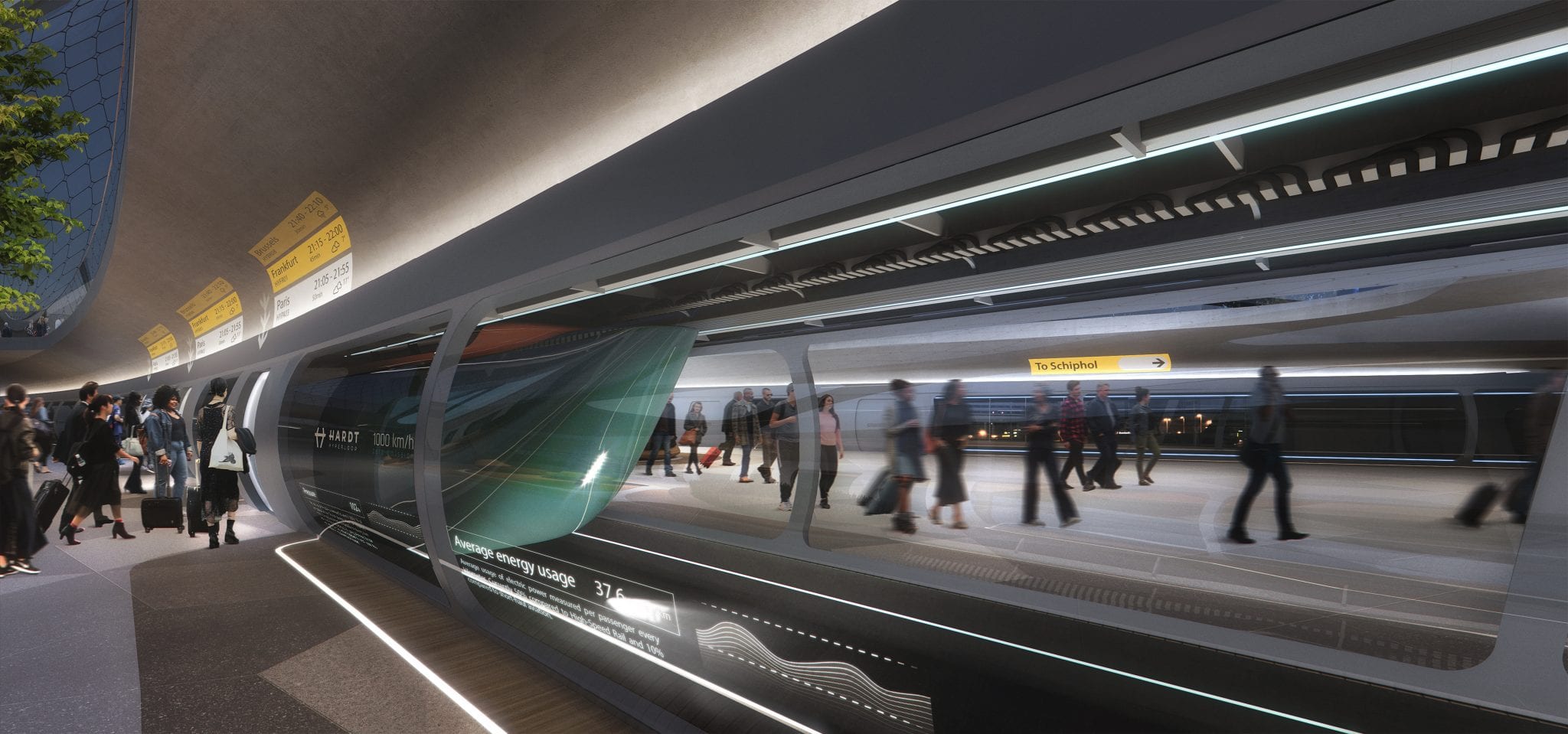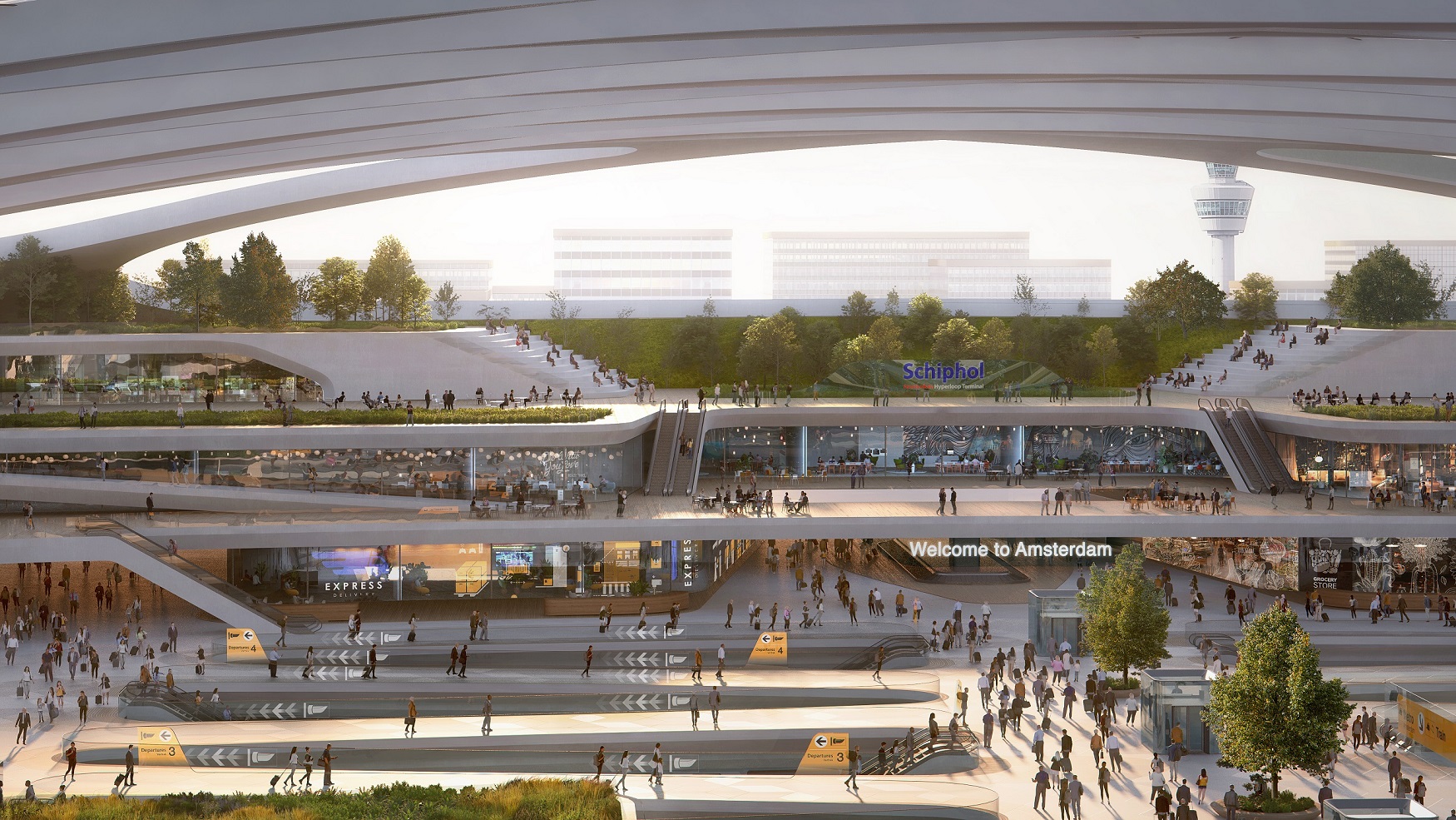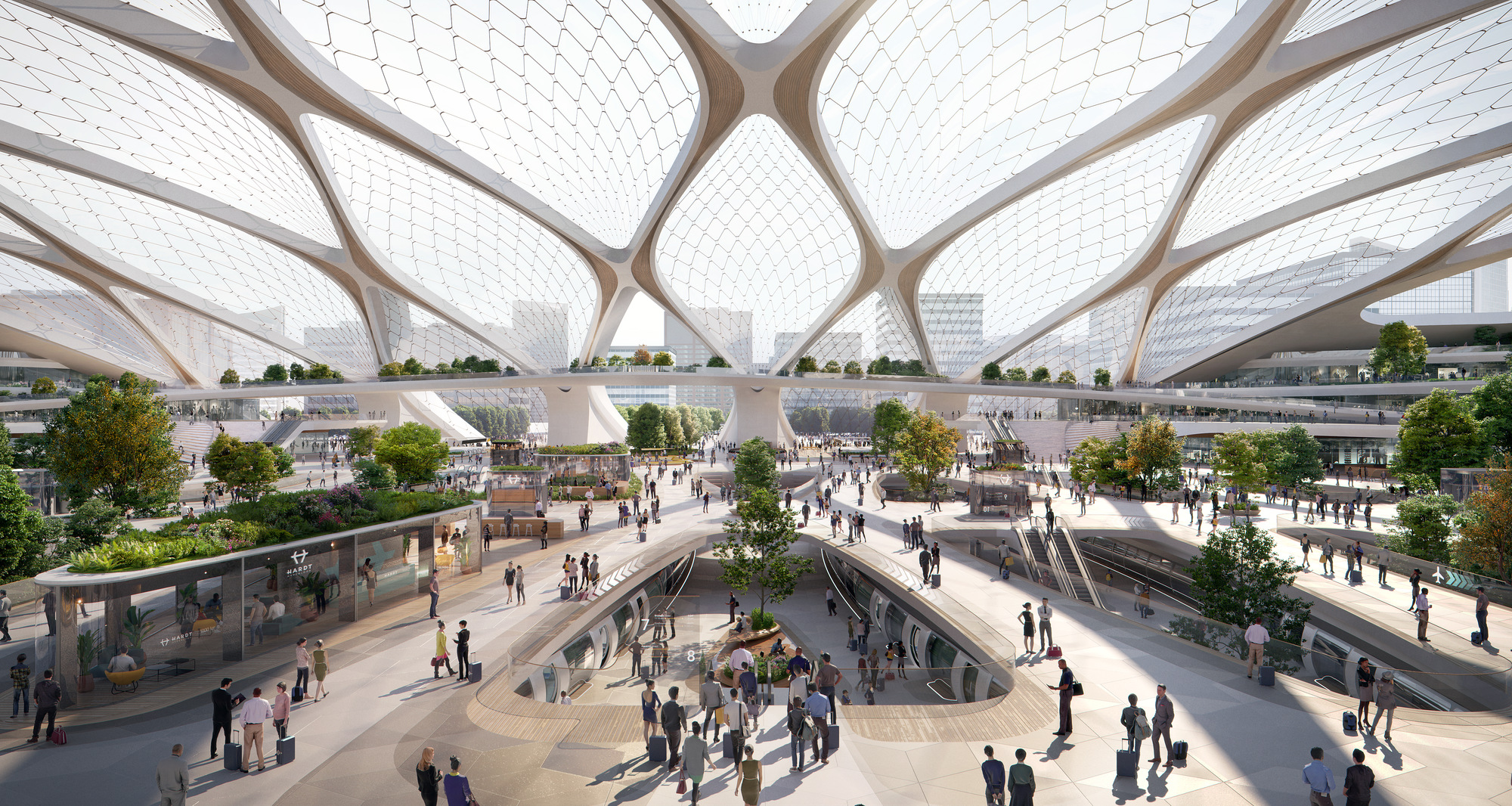The grand vision of the Hyperloop project, that would one day connect Amsterdam and Frankfurt has been unveiled.
Hyperloop Speed:
Hyperloop uses magnet-powered passenger capsules within a vacuum tube to accelerate travelers to high speeds (more than 700mph) and drastically reduces travel time. This technology was the brainchild of Tesla and SpaceX founder, Elon Musk. Architecture is greatly influent by modes of transport, more so when the technology is extremely futuristic. Numerous architecture firms are designing Hyperloops, like Fr-EE and BIG.
Royal Schiphol Group announced that it would be working with Hardt, a technology company from Europe. Hardt is known for its specialization in Hyperloop development. Royal Schipol Group and Hardt would be working on a study to see the feasibility of a Hyperloop connection between the two cities. The proposed route stretches for 280 miles, from Schiphol Airport in Frankfurt to Amsterdam. This mode of travel will allow people to go between the two cities in 50 minutes.

Courtesy of UNStudio
Royal Schipol Group, a Delft-based Dutch startup company, wants to develop an eco-friendly option for the 2 million passengers that travel between Amsterdam and Frankfurt by air, each year. They hope, with the introduction of Hyperloop, to reduce the CO2 pollution by 83,690 tonnes every year.
They partnered with UNStudio to conceptualize and reveal to the public, an image of the system. The CEO of Hardt Hyperloop, Tim Houter said: “We are extremely proud that the movement focussing on the Hyperloop developments keeps growing.

Courtesy of UNStudio
This event once again proves that collaboration holds the key. Last week among others InnoEnerg and Continental, committed themselves to our endeavor, and today we announced a joint study with Royal Schiphol Group.”
The Design for The Hyperloop Station:
The design for the ‘Station of the Future, was announced by UNStudio Futures Team (UNSFutures) at the first edition of HyperSummit. The proposed technology will be powered using solar panels, and will not produce any sound or environmental emissions. The technology can produce the necessary energy to power itself. It proposes to be the first-ever 100% electric transport system to safely transport a high volume of passengers from city to city at unprecedented speeds and journey times.

Courtesy of UNStudio
Ben Van Berkel, the principal architect of UNStudio, says “Hyperloop is not only a realistic and viable alternative to flying, but it is also going to revolutionize travel. It will provide extremely fast travel times with direct connections between cities, enabling completely new ways of working and spending our leisure time, which in turn will lead to a multitude of economic, environmental, and knowledge exchange benefits.”
Read more:
- BIG & HYPERLOOP ONE Reveal Joint Vision For the Future of Mobility-From Dubai to Abu Dhabi in 12 minutes
- Elon Musk: Public Transport Is for Serial Killers!
The network is designed to serve both, a super-high-speed network and more regional networks. The latter is to connect the rest of the city, like urban areas and important hubs (such as ports and airports) to the ultra-high-speed network.
Platforms are curved rather than orthogonal, to allow the modules to serve different functions – like luggage check-in, bicycle dock, daycare for parents, or small pocket parks.

